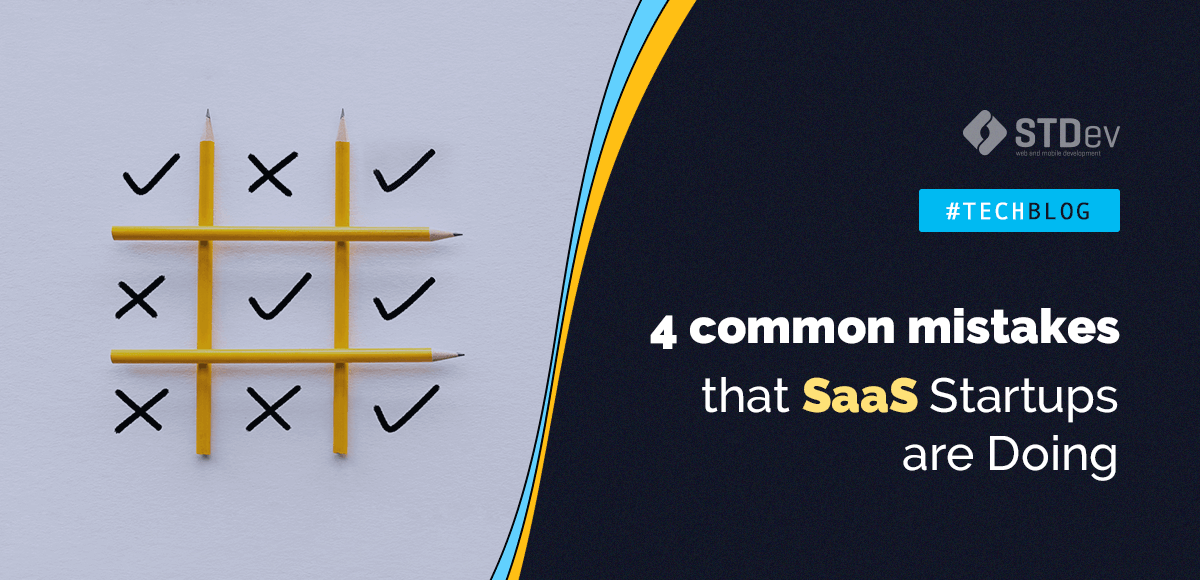Software-as-a-Service, or SaaS as it’s commonly referred to, is a cloud-based method of providing software to users. SaaS users subscribe to an application rather than purchasing it once and installing it. Users can log into and use a SaaS application from any compatible device over the Internet. The actual application runs in cloud servers that may be far removed from a user’s location.
For SaaS startups, there are a few common mistakes that should be avoided. These mistakes tend to be made because the time-constraints, expectations and weight of getting a startup off the ground can make you lose sight of important goals. As a result, SaaS teams end up making rooky mistakes that make the project look silly, scattered and all over the place.
To help you and your team avoid this scenario, check out the list below based on STDev’s own years of experience to get real insight on what not to do:
1. Poor Market Research
Before designing any kind of SaaS product, proper market research must be conducted. This will give you a solid foundation and let you know what you’re getting yourself into. When thinking of the Who (who is it for?), the What (what is it?), and the Why (why should users choose it?) of your product, market research, case studies and evaluations of competitor products will help you make fewer mistakes in the initial roadmap of development.
Researching the market you plan to enter will help you avoid redundancies, let you know how you can make your product unique and what niches to target. While you’re bound to make corrections and updates throughout the development process, it’s better to make tweaks than completely have to overhaul the product because it didn’t meet market standards.
2. Incorrect MVP Definition
Eric Ries, the man behind MVPs describes them as, “the version of a new product that allows a team to collect the maximum amount of validated learning about customers with the least amount of effort.” While this is indeed the idea and intent behind an MVP, it won’t be the case if your team designs one without thorough market research. So this point really hinges on the one above.
MVPs have two ways they can go wrong. They can either be too little or too much. More specifically, an MVP can either be more elaborate than they need to be. This leads to a misallocation of your team’s resources. Alternatively, it can come in under the parameters of what the market requires, thereby decreasing the chances of it leading to a successful final product. This is an are where you will find outsourcing extremely helpful since outsource development teams usually have a better concept of what an MVP needs to have.
3. Miscalculations in Resource Allocation
Needless to say, if you have a scenario where the MVP is ‘over-developed’, you’ll have spent all your financial resources on building the product and near to none on marketing or sales. This is a critical mistake, where many SaaS startups fail.
No matter how great your product is, if no one ever sees it or hears about it, it will never get anywhere. Most SaaS startups are launched by developers who are chiefly focused on their creation. That’s ok, but when the time comes you’ll need to allocate funds so you can bring in some marketing experts or outsource them. Either way, you need to work with specialists to map out PR campaigns, understand where the product needs to be advertised, and what marketing tools will be required. If your product is an app, then App Store Optimization is also something you’ll need to include in your strategy for success.
4. Letting Details Kill the Big Picture
Finally, another common mistake is that during the development process several road bumps and glitches come up that tend to be minor and distract you from the big picture. Yes, in a perfect world where you have limitless amounts of time and endless budget, you’d want to focus on all aspects of your product. However, in the real world, when you’re up against a deadline to get your SaaS product on the market, the key is to create something that is comprehensive, functional, and fills the basic needs of those it’s intended for. So concentrate your energy and resources on user experience, a properly functioning product, and clear messages. You can iron out the details later.
Takeaways
Getting a SaaS product off the ground takes work. But you’re most likely to succeed if you do your research beforehand and plan accordingly, design a concise MVP, properly budget your resources to allow for both marketing and development, and keep your eye on the prize!
STDev’s team of experts has years of experience and consistently stays up to date on the best development practices and tools. If you’re looking to create a seamless SaaS product, contact us today.


